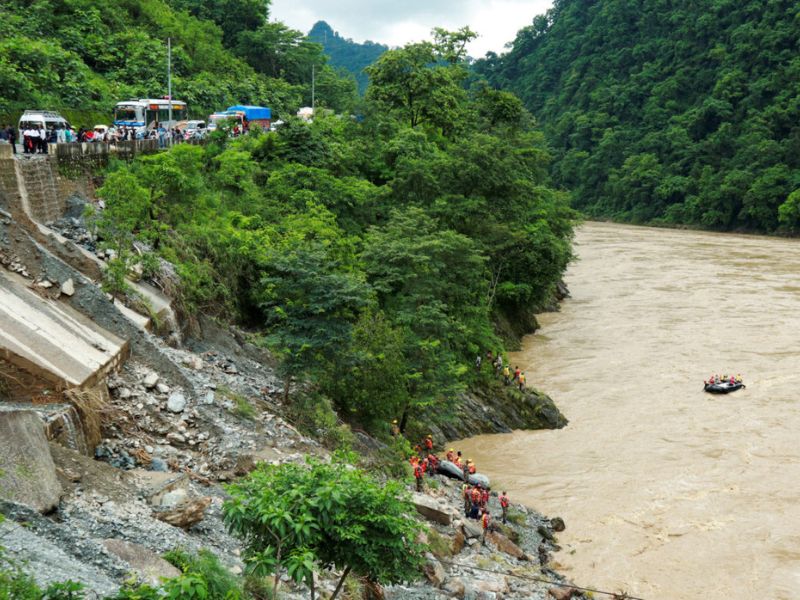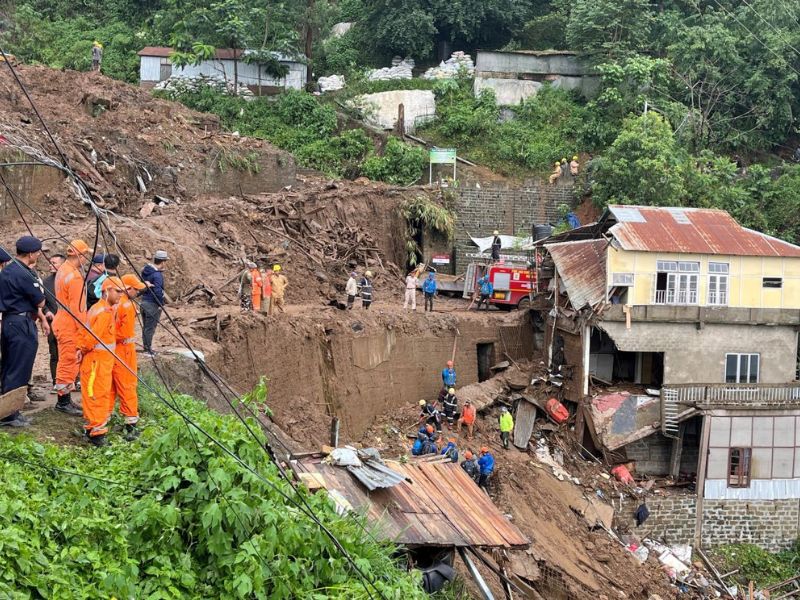Last week’s obliterating avalanche in Nepal, which cleared two traveler buses carrying 65 individuals into a swollen waterway, has cleared out rescuers with small trust of finding survivors. Specialists have affirmed that the look exertion has moved from protect to recuperation, as the probability of finding any living travelers has reduced essentially.
Nepal landslide disaster: no survivors found in search for missing passengers
On Monday, hundreds of security faculty continued their look operations within the Chitwan area, found roughly 53 miles west of Kathmandu. In spite of their tenacious endeavors, they have as it were overseen to recoup seven bodies so distant, counting two found on Monday. Bhesh Raj Rijal, a senior police official within the Chitwan locale, expressed, “There are no chances of finding survivors. Our center is on recuperating bodies.”

Family individuals of the lost travelers have accumulated at the look location, holding onto the black out trust of finding their cherished ones lively. Be that as it may, as days pass, their positive thinking winds down, and the bleak reality sets in. Khimananda Bhusal, a government official within the area, famous the somber air, expressing, “They are asking us to at slightest discover the dead bodies. The scene here is terrible.”
The avalanche, which happened on Friday, has been a stark update of the annihilating affect of Nepal’s rainstorm season. Since mid-June, avalanches and surges activated by exuberant downpours have claimed over 100 lives over the nation. The erratic climate designs and the challenging territory make such common calamities a repeating catastrophe within the locale.
In reaction to the avalanche, the Nepali government has reported plans to boycott buses from traveling at night in zones with unfavorable climate figures. This move points to prevent comparable mischances within the future and guarantee the security of travelers traveling through the country’s precipitous locales.

The Chitwan area, where the mischance happened, is known for its rough landscape and vulnerability to avalanches amid the storm season. The buses were traveling on a course frequently utilized by local people and visitors alike, making the catastrophe indeed more heart-wrenching for the community.
The look operation, which started promptly after the avalanche, has been hampered by challenging conditions. The swollen stream, combined with the flotsam and jetsam from the avalanche, has made it troublesome for rescuers to find the submerged buses and the lost travelers. Despite these deterrents, the look groups, comprising a security workforce and nearby volunteers, work resolutely to recuperate the bodies.
The catastrophe has moreover highlighted the require for way better framework and security measures in Nepal. The government’s choice to limit transport travel at night in unfavorable climate conditions may be a step within the right direction. Still, more comprehensive measures are required to avoid such episodes within the future. Made strides street upkeep, way better climate determining, and expanded awareness among travelers are fundamental to moderate the dangers postured by Nepal’s challenging topography and climate.
The passionate toll on the families of the lost travelers is unlimited. Numerous have been holding up at the look location, trusting for any news almost their adored ones. The vulnerability and melancholy are discernable, as they come to terms with the likely misfortune of their family individuals. The community has united to back those influenced, advertising consolation and solidarity amid this troublesome time.
As the look operation proceeds, the center remains on recuperating the bodies and giving closure to the families of the casualties. The catastrophe serves as a strong update on the defenselessness of communities living in Nepal’s precipitous districts and the require for proceeded endeavors to move forward security and readiness within the confront of common fiascos.
FAQs
1. What happened in the Chitwan district last week?
A landslide swept two passenger buses carrying 65 people into a river swollen by heavy rain. Rescuers have ruled out the chances of finding any survivors and are focusing on recovering bodies.
2. How many bodies have been recovered so far?
As of Monday, seven bodies have been recovered from the accident site in the Chitwan district.
3. What measures are being taken to prevent similar incidents in the future?
The Nepali government has announced plans to ban buses from traveling at night in areas with adverse weather forecasts to prevent such accidents and ensure passenger safety.
Click Here To Learn About:

